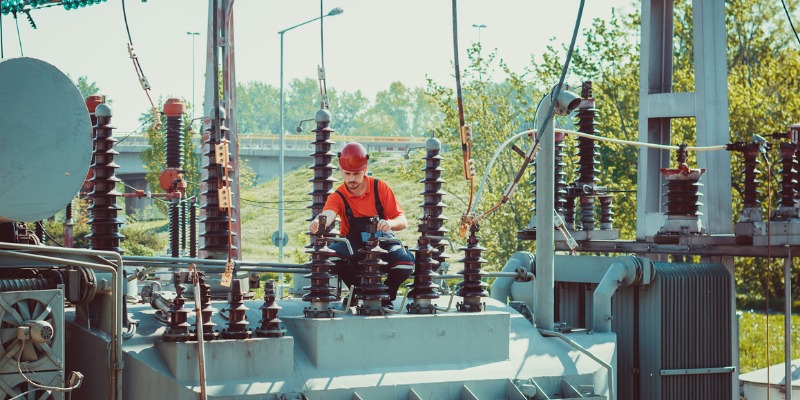
Load Bank 101
With a load bank, you can schedule preventative testing to ensure that your equipment, from office to industrial machines, can continue to function on the backup power until the outage is resolved.What is a Load Bank?
A load bank is either a permanently installed or portable device that is used to maintain and verify/test electrical power sources, such as diesel generators and uninterruptible power supplies. By using the energy originating in the power source, a load bank protects and supports the power source through testing and maintenance. Whether used in conjunction with battery systems, inverter auxiliary and ground power units, or generators, a load bank is the best way to replicate, prove and verify the real-life demands of these critical power systems.Types of Load Banks
Resistive
If the generator is set to a 100% nameplate kW rating, a resistive load bank used for testing can do so at 80% of the nameplate kVA rating. It can fully load the generator’s cooling, fuel and exhaust systems. Predominately used for AC voltages, a resistive load bank can provide a unity or one power factor (PF) load to the tested system.Reactive
When used with a resistive load bank, an inductive load bank will provide a lagging power factor load test, which allows the generator to be tested at 100% nameplate kVA rating.Capacitive
Unlike an inductive load bank, a capacitive load bank is used with a resistive unit as the primary power factor load test. These load banks are rated at kilowatt-amperes reactive (kWAr). Instead of applying the entire load, operators can instead apply exactly as much load as they need to for testing.Resistive Reactive (Combined)
A combined load bank that uses both resistive elements and inductors is used to provide load testing with non-unity PF or lagging, with the capability to test a generator at 100% nameplate kVA rating. The resistors and inductors can be switched on and off independently for a variety of testing abilities.Automatic
Automatic load banks proactively increase loading on diesel generators to avoid wet stacking. It also ensures that generators run at higher levels for optimal performance and reduced emissions, and automatically applies load, when necessary, so generators reach the proper operating temperature for user-specified time periods.Radiator-Mounted
These load banks are designed specially to be mounted on the radiator of a generator.Who Needs a Load Bank?
Do you need to test, calibrate or verify the efficient operation of an electric or diesel generator, battery or other power equipment? Then you need a load bank. This is especially important for emergency backup systems, which are not used regularly, but still require to be tested to ensure they will be ready when they are needed. If you are in need of a load bank, contact our experts today and they would be happy to walk you through your options.
Load Bank Usages
Load banks have multiple purposes to suit the variety of needs in many different industries, from commercial and residential construction companies to the manufacturing industry, and any company in the field that utilizes electrical or diesel-powered generators to power their machinery and tools. This technology falls primarily into the following categories:Manufacturing Testing
Used by engine manufacturers to test their new engines under different varieties of mechanical loads, load banks ensure engines function efficiently. By connecting a dynamometer between the engine and the load bank, the performance can be monitored, and any needed adjustments can be made. Generator manufacturers can also use load banks to test the endurance and stability of their units. Testing allows errors to be corrected and calibration to be set for desired tolerance and specifications.Field Testing & Exercise
Post-installation, generators should be tested regularly to ensure optimum performance and preventative maintenance to identify and resolve issues before the unit is needed during an emergency.Wet-Stacking Elimination
The buildup of oils and grease, or wet stacking, interferes with the function and efficiency of diesel generators, but load banks can be a preventative stopgap to potential issues by ensuring the units are able to consume fuel without incident.Generator Demonstrations
Load banks are a great way to demonstrate the function and usability of generators to potential customers. This allows customers a real-time identification of performance levels. This also provides written proof that the unit was tested and what performance levels can be expected.Why Use Load Bank?
At the minimum, a load bank test ensures any connected UPS and/or generators are working correctly and within optimal conditions. By validating the operational performance and battery autonomy within the UPS system, the load bank can perform preventative maintenance to get ahead of any potential issues, whether breakdowns or damage. It can also show where the cells of the UPS batteries are in their lifespan. Are the cells holding the charge per required standards? Are any of the cells failing? Is the battery reaching the end of its lifecycle? A load bank test can confirm all these conditions, which allows users to plan and budget for any future replacements or upgrades before a critical power event occurs. By investing in a load bank, either permanently or portable testing, companies can protect their equipment and continue business as usual, without expensive post-event replacement costs and loss of revenue.Load Bank Testing
There are many benefits in investing in generator load bank testing equipment:- Back-up validation without critical load risk
- Ensure engineered specifications are still met
- Creates easy documentation from the tests to identify and monitor trends
- Infrared testing ensures installation throughout the facility is done properly
- Eliminates wet stacking and other generator problems
- Schedules preventative maintenance program on all components
- Allows for easy generator adjustments
Testing Procedure & Requirements
When performed correctly by a trusted professional technician, a load bank test will confirm the generator’s ability to perform properly and efficiently. Below is an outline of the steps that should be performed during load bank testing:- Fuel & Coolant Check: The fuel tank should be full, and there should be sufficient levels of oil and coolant to support the system.
- Temperature Check: During a visual inspection of an active generator, the standard operating temperature at the beginning, during and end of the inspection, along with any abnormal sounds can be an indicator of problems. If an issue is suspected, the technician will resolve it before going on to the next step.
- Connecting the Load: Starting with the largest load, technicians will add smaller loads until the total load carried reaches 50% of the maximum continuous rated load.
- Amperage Check: Using an ammeter to check the voltage within each leg, this check verifies that the voltage is neutral and does not drop below 105 volts at full load.
- Load Monitoring: Technicians will listen for abnormal noises and monitor for overheating. This step can last from 4-24 hours up to a full week for larger prime power generators.
- Shut Down and Recording Results: As the testing winds down, the technicians will methodically remove the loads so that the generator can run under progressively lighter loads, before allowing the generator to cool before shutting it down completely. Results from the duration of the test are recorded and provided to customers with any recommendations regarding their findings.